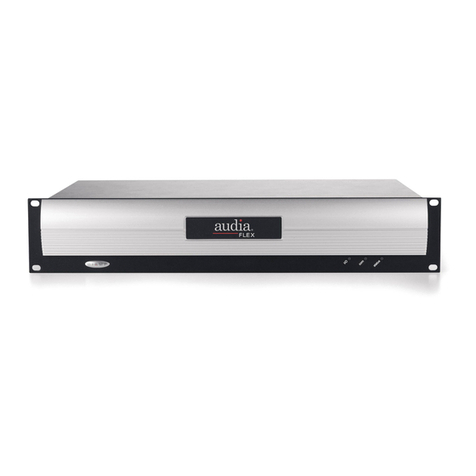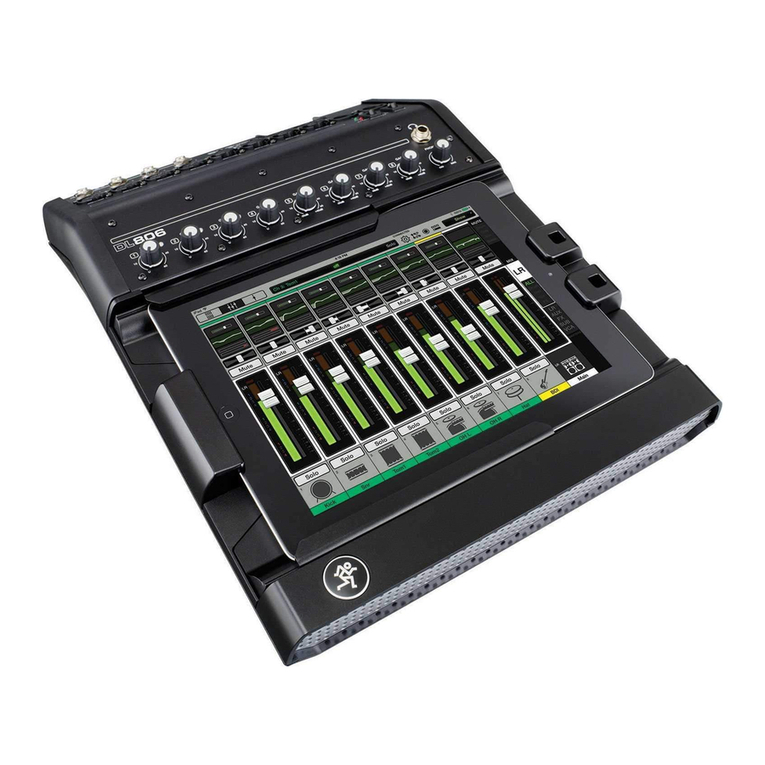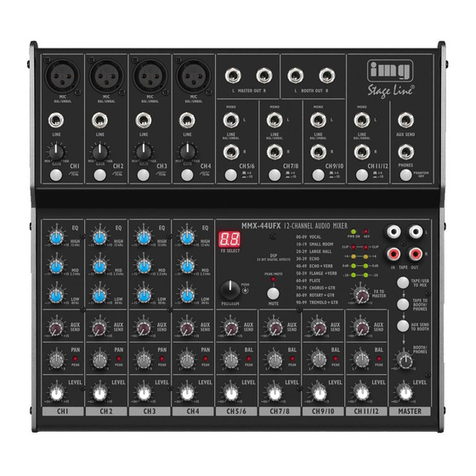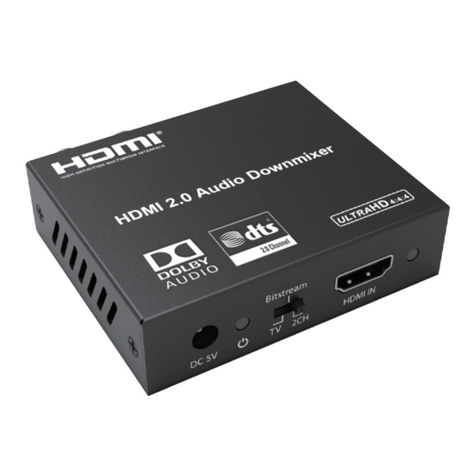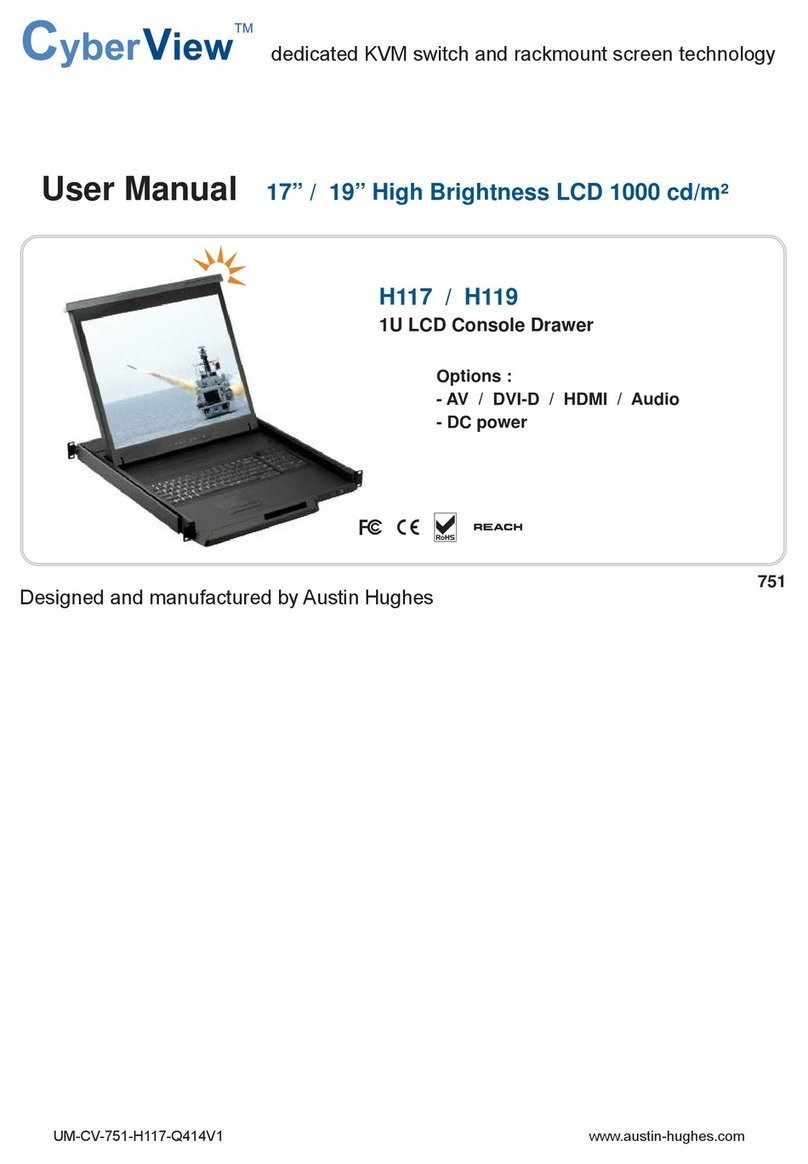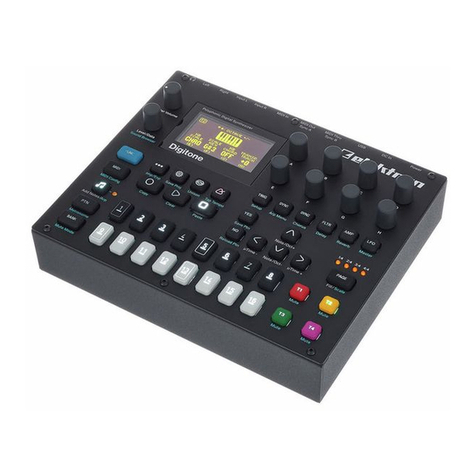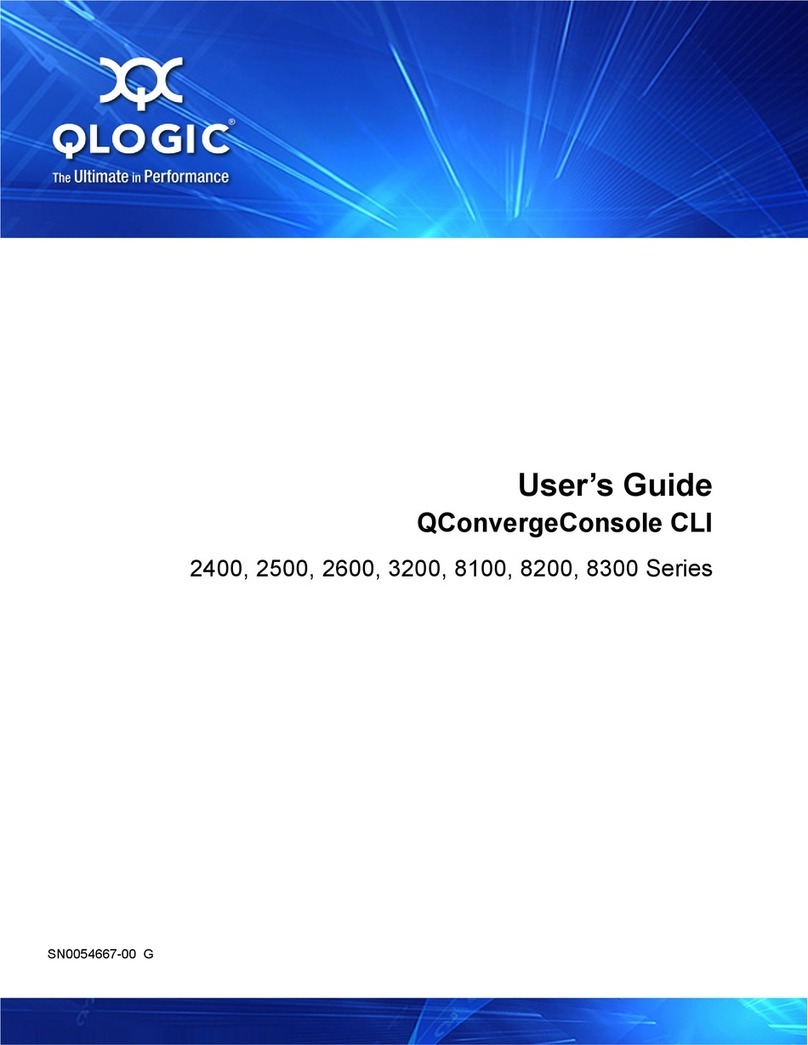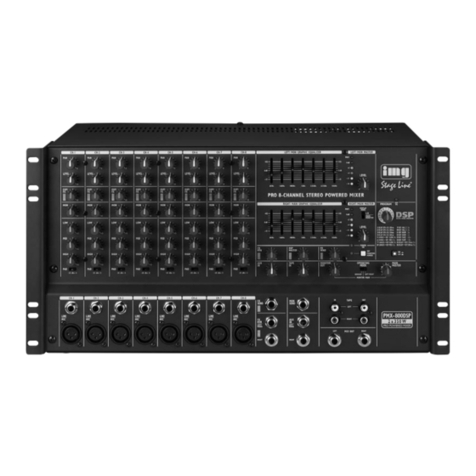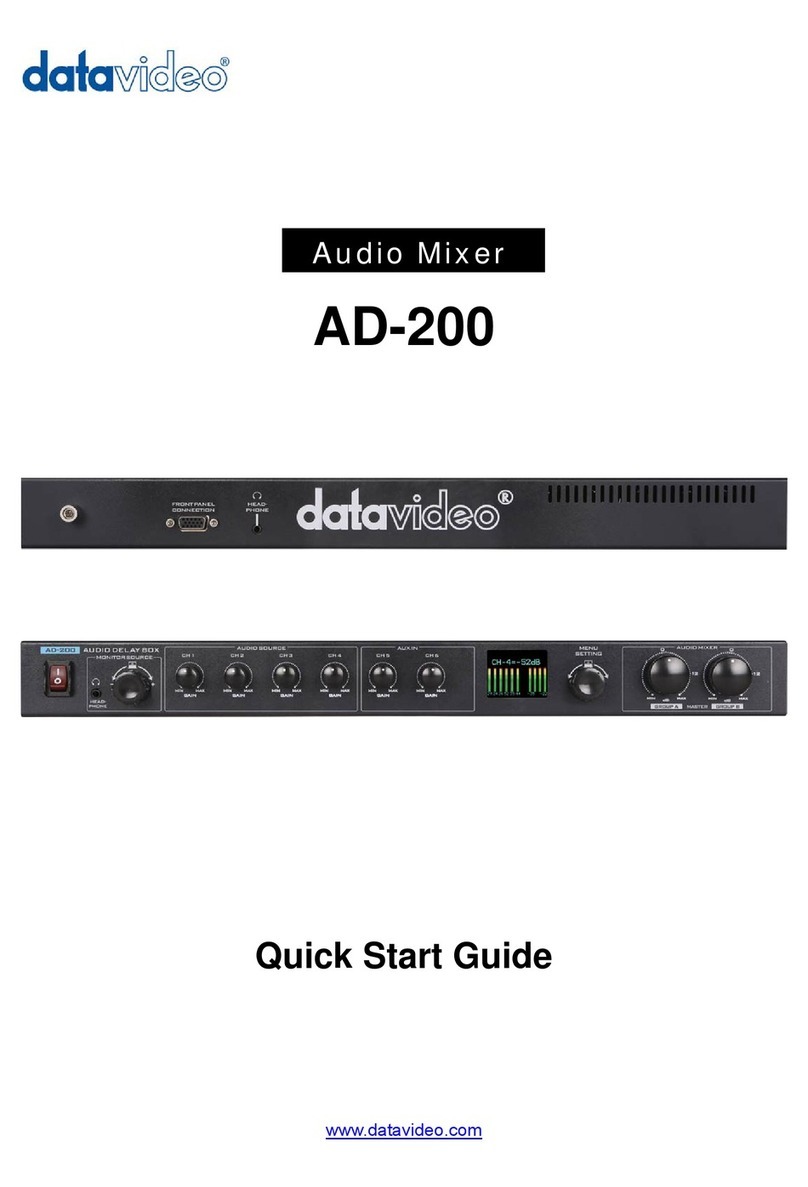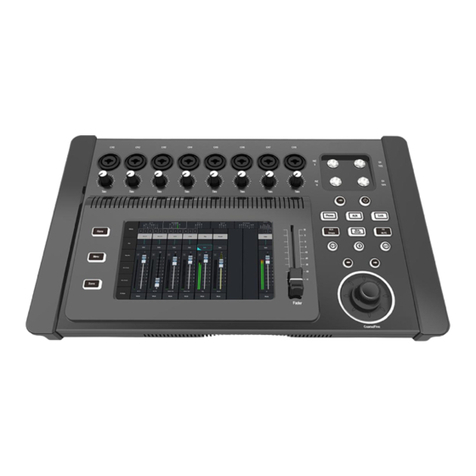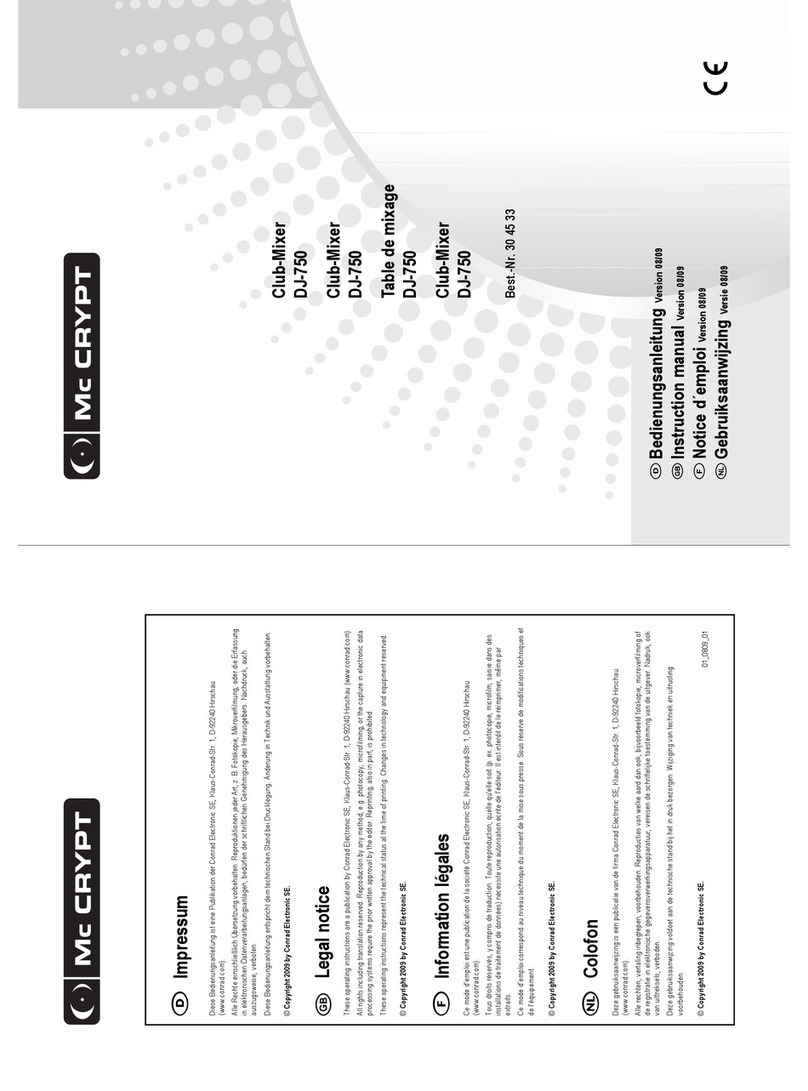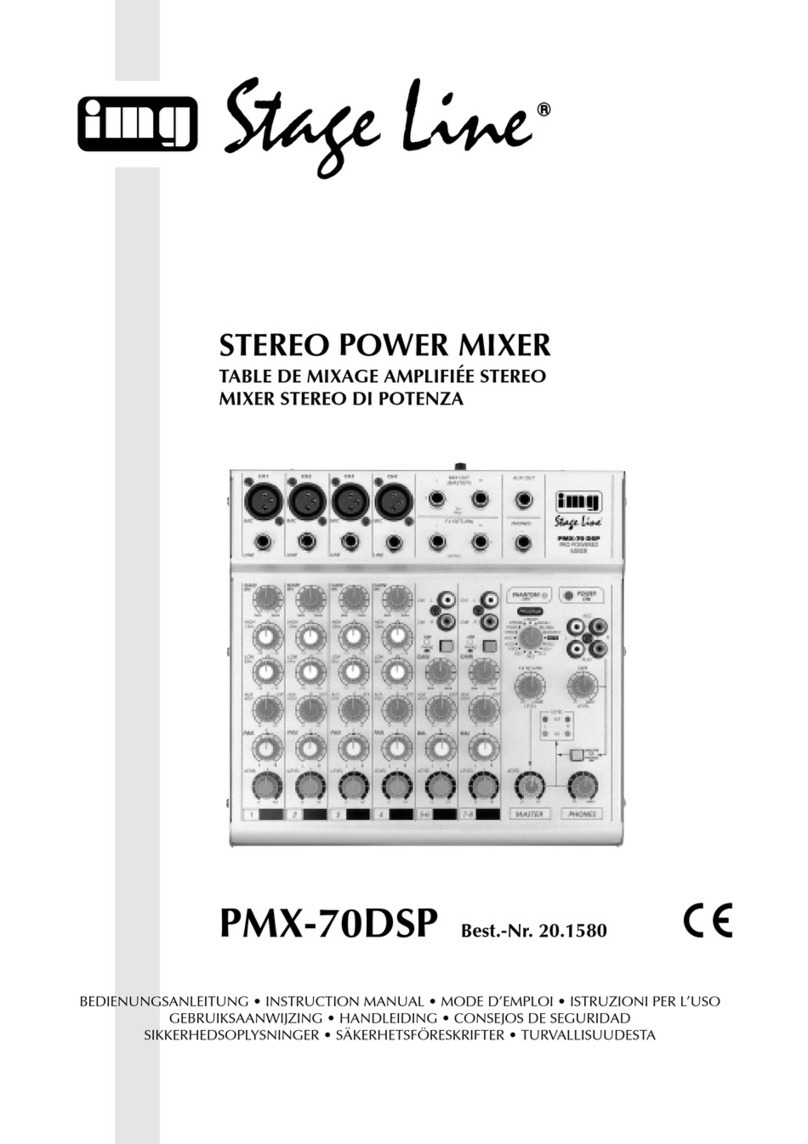Teatronics Lighting Controls TECH DIRECTOR User manual

LIGHTING CONTROL CONSOLE
TECH DIRECTOR
5/29/97
page
TEATRONICS LIGHTING CONTROLS,TEATRONICS LIGHTING CONTROLS, INC.INC.
Owner's Manual
TECH DIRECTOR
LIGHTING CONTROL CONSOLE
TEATRONICS LIGHTING CONTROLS, INC.TEATRONICS LIGHTING CONTROLS, INC.
1236 LOS OSOS VALLEY RD., STE. G
LOS OSOS, CA 93402
Phone: (805) 528-6900
FAX: (805) 528-93455/29/97

LIGHTING CONTROL CONSOLE
TECH DIRECTOR
5/29/97
page
TEATRONICS LIGHTING CONTROLS,TEATRONICS LIGHTING CONTROLS, INC.INC.
RECEIVING YOUR EQUIPMENT
As soon as you have received your equipment, open the boxes and examine the equipment inside. If any
damage is noted, contact the carrier immediately to file a claim for damages. When the equipment left the
factory it was in good condition and properly packed.
If you find the equipment to be in accordance with your order and the packing list, and also in good
condition, you may read on to the section covering SETUP and CONNECTION. If for some reason the
equipment in the carton does not agree with your order or the packing list, contact the factory immediately
and we will help solve the mystery.
i

LIGHTING CONTROL CONSOLE
TECH DIRECTOR
5/29/97
page
TEATRONICS LIGHTING CONTROLS,TEATRONICS LIGHTING CONTROLS, INC.INC.
INTRODUCTION
Thank you for buying an Teatronics Lighting Controls, Inc. Tech Director Control Console. Please read
this manual thoroughly to understand your unit and to insure that you get the most out of it.
The purpose of the Owner’s Manual is to assist you in becoming familiar with your Tech Director: its
installation, operation, troubleshooting, and maintenance. Ownership of a sophisticated piece of electronic
equipment involves more than just “buy it and use it”. The Tech Director was designed in response to
users’ request for many features they felt were important. These features lie beneath the simplicity of
appearance. To fully appreciate them and what they can do for you, read on.
The Tech Director Control Console is a two scene analog manual console. It works well with the entire line
of Teatronics Lighting Controls Dimmer Packs as well as with packs made by other manufacturers of
remote controlled dimming equipment.
The internal construction is modular for ease of replacement in the event of failure. The circuit boards are
fully connectorized and the slide pots can be easily replaced when necessary because they are fastened to
the modular circuit boards which come out easily.
Take the time and care to follow these instructions and your Tech Director Console should provide you
with long-lasting quality lighting control.
ii

LIGHTING CONTROL CONSOLE
TECH DIRECTOR
5/29/97
page
TEATRONICS LIGHTING CONTROLS,TEATRONICS LIGHTING CONTROLS, INC.INC.
RECEIVING YOUR EQUIPMENT ..................................................................................... i
INTRODUCTION................................................................................................................. ii
SETUP AND CONNECTION.............................................................................................. 1
OPERATION......................................................................................................................... 4
ADJUSTMENTS .................................................................................................................. 8
MAINTENANCE.................................................................................................................. 9
IN CASE OF TROUBLE...................................................................................................... 10
LIMITED WARRANTY....................................................................................................... 12
DMX OUTPUT OPTION..................................................................................................... 13
TABLE OF CONTENTS
iii

LIGHTING CONTROL CONSOLE
TECH DIRECTOR
5/29/97
page
TEATRONICS LIGHTING CONTROLS,TEATRONICS LIGHTING CONTROLS, INC.INC.
1
SETUP AND CONNECTION
MECHANICAL INSTALLATION
The Tech Director Console has no limitations on its physical orientation; it may be mounted in any
position without damage to the unit. Personal preferences usually dictate the best placement. All
controls should be easy to reach by the operator with emphasis on smooth operation of the slide controls
and easy access to the bump buttons. A moderate amount of ventilation is required when the console is
on; it should not be covered with a cloth, dustcover, or road-case when powered up. As with all
electrical equipment, moisture can cause permanent damage to the circuitry; the console should be
protected against rain, and beverages.
ELECTRICAL INSTALLATION
The Tech Director requires a source of AC power at the console location. Input voltage to the console
can be factory ordered to be either 120 or 240 Volts at either 50 or 60 Hertz (120 V 60 Hz is standard).
The current required to operate is small (under 3 Amperes) however, since loss of power to the
console will black out the entire lighting system, it is suggested that a dedicated circuit be provided if
possible. A removable ‘international’ style power cord is provided to supply power to the Tech
Director. This cord is grounded for safety and electrical noise protection. Do not attempt to defeat
the ground by removal or adaptation.
All that is required to connect the control console to the dimmer pack(s) is a remote cable or cables of
the proper type. This cable is connected to the output jack on the back of the console and to the input
jack on the back of the dimmer pack(s). Each connector is keyed to assure proper connection; when
the keys are lined up the connectors will slide together with ease. Do not force connectors! Broken
connectors are not covered by the warranty.
Worklight ‘BNC’ connectors are provided across the top of the Tech Director Console. Although
more than one connector may be provided on your console, the circuitry inside the console was
designed to drive only one high intensity lamp (5 Watt type Q5 lamp) or two low intensity lamps
(3.25 Watt type 1815 lamp). Loading the circuitry with more than one high intensity lamp or more
than two low intensity lamps may cause erratic operation of the console and will lead to permanent
damage.

LIGHTING CONTROL CONSOLE
TECH DIRECTOR
5/29/97
page
TEATRONICS LIGHTING CONTROLS,TEATRONICS LIGHTING CONTROLS, INC.INC.
2
Setup and Connection
Continued...
INTERFACE TO DIMMERS
Remote control lighting consoles use a low voltage (usually D.C.) control signal to vary the outputs of
the dimmer packs. The lighting industry has standardized on a “zero to ten” volt D.C. control signal.
The Tech Director follows this standard, but can be adjusted to meet many other control voltages to
interface with dimmers which do not follow the standard. Unless a different control voltage was
specified when your console was ordered, it is adjusted for zero to ten volt operation. When adjusted
for zero to ten operation, the control voltage is zero volts when a channel is off, ten volts when a
channel is on full, and varies linearly between the two extremes.
Each channel has its own control wire which runs to the dimmer pack(s). The standard output connector
groups the control signals in groups of twelve channels. A 24 channel console,therefore, will have two
output connectors. Each connector also carries signal return path properly called D.C. common al-
though it is often referred to as ‘ground’. The standard output connector on the Tech Director is a 16 pin
‘Standard Round Connector’ (SRC-16). The signals for channels 1 through 11 appear on pins 1 through
11. Channel 12 appears on pin 16. The common reference signal (D.C. common) is connected to pin
15. Pins 12 and 13 are used for power supply feeds from the dimmer pack(s) and are not connected in
the Tech Director. Pin 14 is not used. These pin-outs are shown in the table on the following page.
Teatronics Lighting Controls, Inc. dimmer packs are ‘plug compatible’ with the Tech Director. Twelve
channel packs will plug together with a standard “one to one” control cable (pin 1 wired to pin 1, pin 2
to pin 2 etc.). Eight channel packs will work with a standard cable also, but control channels 9 through
12 will be wasted. A “Spreader” cable may be made for eight channel packs so as not to waste control
channels. Six channel packs may be connected using a standard control cable, in which case the other
six control channels are looped to another six channel pack. Teatronics Lighting Controls, Inc. control
consoles may be factory ordered with custom connectors and output wiring.
The outputs of the Tech Director are diode isolated to allow multiple consoles to be connected to the
same dimmers. Each output is capable of sourcing 10 mA of current which corresponds to a load
impedance of 1000 Ohms (1 K Ohm) at standard zero to ten control voltage. Due to power supply
limitations, however, only 100 mA of current is available for all the outputs. Therefore only ten chan-
nels could be used if all were loaded to their maximum current. Luckily most modern dimmers do not
load the channel outputs of the console to anywhere near their maximum (Teatronics Lighting Controls,
Inc. dimmers require only .01 mA of current). As a rule, if the input impedance of the dimmers con-
trolled by a Tech Director are rated at 10,000 Ohms (10 K Ohms) or higher, there is no chance of
overloading the console.

LIGHTING CONTROL CONSOLE
TECH DIRECTOR
5/29/97
page
TEATRONICS LIGHTING CONTROLS,TEATRONICS LIGHTING CONTROLS, INC.INC.
Pin numbers as seen facing the rear of the console
CONTROL OUTPUT PINOUTS
DB 15
8 7 6 5 4 3 2 1
15 14 13 12 11 10 9
SRC
4 3 2 1
9 8 7 6 5
13 12 11 10
16 15 14
3
Pin Number
DB 15
SRC
1
2
3
4
5
6
7
8
9
10
11
12
13
14
15
16
1
2
3
4
5
6
7
8
9
10
11
13
14
-
15
12
Function
Channel 1 control
Channel 2 control
Channel 3 control
Channel 4 control
Channel 5 control
Channel 6 control
Channel 7 control
Channel 8 control
Channel 9 control
Channel 10 control
Channel 11 control
+ 15 Volt supply from dimmer
- 15 Volt supply from dimmer
Not Used
D.C. Common
Channel 12 control

LIGHTING CONTROL CONSOLE
TECH DIRECTOR
5/29/97
page
TEATRONICS LIGHTING CONTROLS,TEATRONICS LIGHTING CONTROLS, INC.INC.
4
OPERATION
CONTROLS AND INDICATORS
The operation of the Tech Director may be best understood by dividing the various controls into groups.
The groups we will divide the controls into for the purpose of this manual are: Master section,
Crossfader section, Submaster section, Channel section, and Effects section.
MASTER SECTION
The controls grouped into the Master Section are the Grand Master Slider, the Independent Master
Slider, the associated timers, and the Blackout Switch. These three controls have a global effect on the
rest of the console. The Grand Master Slider proportionally adjusts the level of the scene selected by the
Crossfader. The Independent Master adjusts the level of all submasters which are switched to the
Independent Master position regardless of the position of the Crossfader. The Blackout Switch, when in
the down (blacked out) position takes all channel outputs to a level of zero. The difference between the
Grand Master and Independent Master is that the Grand Master works through the Crossfader whereas
the Independent Master ignores the effect of the Crossfader. The timers above the Grand and Indepen-
dent Masters serve to delay the effect of moving the sliders. For example, if the timer above the Grand
Master is set to 10 (seconds), and the Grand Master slider is moved rapidly from zero to maximum, the
effect is the same as if the timer was set to zero and the Grand Master was gradually moved from zero to
maximum over a period of ten seconds.
CROSSFADER SECTION
The controls grouped into the Crossfader Section are the X Scene Slider, the Y Scene Slider, the associ-
ated timers, and the Crossfade Progress Display. In a two scene console (such as the Tech Director)
typically one scene is ‘active’ while the other scene is being pre-set for the next lighting cue. The
Crossfader Controls select which is the active scene, and which is the in-active scene (which may be
altered without affecting the outputs). The X Scene Slider affects the top row of channel controls (the X
Scene) whereas the Y Scene Slider affects the bottom row of channel controls (the Y Scene). The Y
Scene Slider is ‘up-side-down’ from all other sliders on the console in that its output is at maximum
when the slider is all the way down (toward the operator) and is at zero when the slider is all the way up
(toward the Chase Controls). The Y Scene Slider is oriented this way so that smooth fades from one
scene to the other may be made by moving both the X and the Y Scene Sliders together. The Crossfade
circuitry incorporated in the Tech Director is ‘dipless’; that is, if a channel is at the same level in both
scenes, that channel level will not dip (or peak) if the two scene sliders are moved together. The two
scene sliders do not have to be moved together, however. By splitting the crossfaders, one scene may be
faded out before the other scene is faded in, or the in-active scene may be faded in before the active
scene is faded out.

LIGHTING CONTROL CONSOLE
TECH DIRECTOR
5/29/97
page
TEATRONICS LIGHTING CONTROLS,TEATRONICS LIGHTING CONTROLS, INC.INC.
5
Operation
Continued...
The timers associated with the X Scene and Y Scene Sliders function the same as the timers in the
Master Section; they serve to delay the effect of moving the slider. It should be pointed out that it is not
necessary to move the slider from zero to maximum for the timers to work. If the timer is set to 10, and
the associated slider is moved rapidly from zero to five (half way), it will have the same effect as if the
slider was moved from zero to five over a period of 5 seconds (half the timer setting).
The Crossfade Progress Display consists of ten Light Emitting Diodes (LEDs) which approximately
track the position of the X and Y Scene Sliders when the associated timers are set to zero. When the
timers are not set to zero, the display shows the effective position of the sliders as the timed fade
progresses. Sometimes, during a timed crossfade, it is desirable to slow down or ‘hold’ the progress of
the fade. Slowing down the fade can be accomplished by simply turning up the setting of the timer.
Holding the fade may be done by matching the position of the Scene Sliders to the effective position of
the sliders as shown on the Crossfade Progress Display. Once the sliders have been moved to the
effective position of the timed fade, the fade will hold until the sliders are moved. At this time the timers
may be reset for a new time, or to zero, in which case the fade may be completed manually.
SUBMASTER SECTION
The controls grouped into the submaster section are the A, B, C, and D Submaster Sliders and the
associated Independent Master/Grand Master Selector Switches. Each submaster controls a group of
channels, and in turn is controlled either by the Grand Master (through the Crossfader) or by the Inde-
pendent Master (bypassing the Crossfader). The channels that each submaster controls are selected by
the Channel Selector Switches as described in the next section. The Independent Master/Grand Master
Selector Switch above each submaster select the mastering mode for that submaster.
CHANNEL SECTION
The controls grouped into the Channel Section are all the Channel Sliders and the associated Submaster
Selector Switches. Up until this point, the controls that have been discussed typically affect a group of
channels. The sliders and switches in the Channel Section affect only their own channel, that is the
controls for channel 1 have no affect on the output of channel 2 or any other channel. On the Tech
Director there are four controls for each channel (five if you count the Momentary Button described
below). These controls are the two sliders (X and Y Scene) and a Submaster Selector Switch for each
slider. Each channel’s output level is dependent on the settings of a number of sliders and switches. The
various possibilities of switch settings are numerous. A few of the possibilities are discussed here and
should give the user a fair understanding of the versatility of the Tech Director’s controls.

LIGHTING CONTROL CONSOLE
TECH DIRECTOR
5/29/97
page
TEATRONICS LIGHTING CONTROLS,TEATRONICS LIGHTING CONTROLS, INC.INC.
Operation
Continued...
Standard two scene operation without submastering can be accomplished by placing all the submaster
sliders at full and switching all the Independent Master/Grand Master switches to Grand Master. Since
the submasters are all at full, the position of the Submaster Selector Switches on each channel does not
affect the output, however in the interest of neatness, it is recommended that all the switches be switched
either up or down. In this configuration, the Grand Master controls the overall level of all channels and
the crossfaders are used to fade from the X Scene to the Y Scene.
Two scene operation with submastering is the same as above, except the submasters may be used to
adjust the overall level of the channels which are switched to them. In this configuration some of the
channels in each scene will be switched to one submaster and some to the other. Since the submasters
themselves are still switched to Grand Master, the Crossfader controls which two submasters are active;
A & B are active if in the X Scene, C & D are active if in the Y Scene.
One scene operation with four submasters may be useful for certain events. This configurationmay be
accomplished in two ways. The first is to leave the Grand Master/Independent Master switches in the
Grand Master position and split the crossfaders so that both X and Y Scenes are active. The other way is
to switch the Grand Master/Independent Master switches all to Independent Master thus bypassing the
Crossfader.
In some cases it may prove useful to switch a channel from Mastered to Independent. A costly way to
provide this feature on a console is to add an additional switch for each channel. In the interest of
economy while still maintaining flexibility the Tech Director provides Independent Mode on each
channel by switching one of the submasters in each scene to Independent Master. The Submaster Switch
for each channel then becomes a Mastered/Independent Switch.
EFFECTS SECTION
The controls grouped into the Effects Section are the Bump Controls: Bump On/Off Switch, Add/Solo
Switch, and Bump Buttons on each channel and each submaster, and the Chase Controls: Chase On/Off
Switch, Forward/Reverse Switch, 8 Channel/4 Channel Switch, Rate Slider, and Level Slider. The Bump
Buttons (also called Momentary or Flash Buttons) are used to alter the channel (or submaster) level to
full without moving the slider. The Bump On/Off Switch disables the Bump Buttons when in the off
position. The Add/Solo Switch determines how a Bump Button affects the console. In the Add Mode,
the Bump Button adds the channel (or group of channels in the case of a submaster bump) to the output
of the console just as if the associated slider had been moved to full. In Solo Mode, the Bump Button
causes all the channels, except those that are bumped, to be blacked out, thus leaving only the bumped
channels on.
The Tech Director includes a Chase Unit which chases the first four or eight channels of the console
depending on the position of the 8 Channel/4 Channel Switch. The Chase On/Off Switch turns off the
Chase Unit so that if the chase level is accidently brought up, the outputs will not start chasing. The
Forward/Reverse Switch determines the direction of the chase; in Forward Mode, the chase sequence
6

LIGHTING CONTROL CONSOLE
TECH DIRECTOR
5/29/97
page
TEATRONICS LIGHTING CONTROLS,TEATRONICS LIGHTING CONTROLS, INC.INC.
Operation
Continued...
starts with channel and counts up. In Reverse Mode, the chase sequence starts with either channel 4 (if
in 4 Channel Mode) or channel 8 (if in 8 Channel Mode) and counts down. The Chase Rate Slider
controls how long the chase leaves one channel on before sequencing to the next. The Level Slider
controls the level each channel is sequentially brought up to.
The Chase Unit on the Tech Director ‘piles-on’ to the outputs of channels one through eight. That is, it
only serves to increase the level of the channel above what it is set at. Therefore, if channels one through
eight are at 80%, the chase will have no effect on the outputs until the chase level control is brought
above 80% (a setting of 8). The chase level is not affected by the Grand Master but is affected by the
Blackout Switch.
In addition to the controls and display discussed above, there is a Worklight Level Control, a Channel
Output Level Indicator on each channel, and indicator LED’s on the Blackout and Bump On/Off
Switches. The Worklight Control varies the voltage provided to the gooseneck light sockets from 0 to 14
volts. The Channel Output Indicator increases in intensity as the associated channel is brought from 0 to
100%. The Channel Indicator reflects the effect of the Chase Unit on channels one through eight. The
red Blackout LED lights when the console is blacked out. The yellow Bump LED lights when the bump
buttons are enabled.
7

LIGHTING CONTROL CONSOLE
TECH DIRECTOR
5/29/97
page
TEATRONICS LIGHTING CONTROLS,TEATRONICS LIGHTING CONTROLS, INC.INC.
ADJUSTMENTS
The Tech Director console has internal adjustments to set the control voltage at each end of the slide
pot’s travel. This adjustment is usually factory set for zero to ten volt operation. If other than zero to ten
volt operation is desired (and was not specified when the console was ordered) the adjustments may be
altered to yield the correct control voltage, so long as the control voltage falls within the limits of the
Tech Director’s circuitry. Any voltage up to 13.5 volts may be obtained at the Tech Director’s outputs.
The control voltage corresponding to the slider set at minimum is adjusted first. This voltage is usually
zero volts. One common exception is the 2 to 7.6 volt control used on some dimmers. To set the
minimum output voltage connect the positive lead of a voltmeter to the output for channel one (pin 1)
and the negative lead to D.C. common (pin 15). Put the console in ‘blackout’. Adjust the OFFSET pot
(labeled inside the console) to give the desired minimum control voltage.
The control voltage corresponding to the slider set at maximum is adjusted after the minimum control
voltage has been set. With the voltmeter connected as above, bring channel one to full. Adjust the
VREF pot (labeled inside the console) to give the desired maximum control voltage.
Your console should now be adjusted to the new control voltage range.
8

LIGHTING CONTROL CONSOLE
TECH DIRECTOR
5/29/97
page
TEATRONICS LIGHTING CONTROLS,TEATRONICS LIGHTING CONTROLS, INC.INC.
MAINTENANCE
The Tech Director console requires no maintenance, other than keeping dust and liquids out of the
console. The console should be covered when not in use to prolong the service life of the slide pots.
Dirt and moisture are a slide pot’s worst enemies. A slide pot’s next worst enemy is the do-gooder who
sprays WD-40 into it. WD-40, volume control cleaners, tuner cleaners, and similar products dissolve the
lubricant inside the slide pot. This will shorten the life of the pot and make operation less smooth. Only
when a slide pot is so worn out that it must be replaced anyway should WD-40 or the like be used; in this
case spray cleaners may prolong the life long enough to order replacement slide pots.
9

LIGHTING CONTROL CONSOLE
TECH DIRECTOR
5/29/97
page
TEATRONICS LIGHTING CONTROLS,TEATRONICS LIGHTING CONTROLS, INC.INC.
IN CASE OF TROUBLE
The Tech Director is a solid-state analog control console. Of the components used in a lighting system,
this console is probably the least likely to fail. The following paragraphs may help in the event the
lighting system fails to work properly.
First lets get the obvious things out of the way; check that the console is plugged into a live outlet, that
the fuse is good, that the console is connected to the dimmers and that the dimmers are on. Also be sure
the loads are connected and not burned out. Next, and most obvious, is the console being used properly?
No sense in returning the console for service if the only reason it wasn’t working was because the
blackout switch was on.
Now that the obvious things are out of the way we can get down to the nitty gritty. If the console seems
to be working properly but is not controlling the dimmers, skip to the next paragraph. If the Illuminated
Power Switch fails to light, re-read the previous paragraph. If the Power Switch lights, but none of the
indicator LED’s on the front panel glow, then the internal power supply is dead. If the Blackout and
Bump-On LED’s work, but the Crossfader LED Ladder doesn’t, then the Grand Master and/or
Crossfader circuitry is bad. If all the ‘Master Section’ LEDs function properly but some or all of the
channel indicators fail to respond, the problem probably lies with the channel output circuits. All of the
above failure modes require work on the console. To continue warranty coverage, all work must be done
by an Authorized Service Center. If the user is technically competent and familiar with solid-state
electronics, repair may be attempted. Service manuals and parts kits are available from the factory. Any
attempted repair by un-authorized personnel voids the warranty. High voltages (117 volts) exist inside
the unit, care must be exercised when the console is open.
If the console appears to be working, that is the channel indicators get brighter as the channel is brought
up and dimmer as the channel is brought down, then chances are that the console is not at fault. If the
dimmers fail to respond to the console, and are off all the time, try this simple test. Take a 9 volt ‘tran-
sistor radio’ battery and connect the negative side(-) to D.C. common (pin 15) and the positive side (+)
to channel 1 control (pin 1) of the dimmer. If channel one of the dimmer comes up, then the dimmer is
O.K., if it doesn’t then either the load is burned out, the battery is bad, or the dimmer is out.
If the dimmers fail to respond to the console, and are on all the time, try disconnecting the control line
from the dimmer. If the dimmer stays on, check for any ‘override’ switch on the dimmer that may be
stuck (all channels should go off when the console is disconnected from the dimmer). If the override
switch is not at fault, chances are that the output device in the dimmer has shorted and must be replaced.
If the dimmers go off when the control console is disconnected, check that the control cable is not
shorted. Also try plugging the control cable into a different output (if the console is larger than twelve
channels). This may help isolate a bad channel or control cable.
If the dimmers respond to the console but do not go to full, it is possible that the control voltage has been
adjusted for other than zero to ten volt operation (or the dimmers expect other than zero to ten volt
operation). Adjustment of the control voltage is covered elsewhere.
10

LIGHTING CONTROL CONSOLE
TECH DIRECTOR
5/29/97
page
TEATRONICS LIGHTING CONTROLS,TEATRONICS LIGHTING CONTROLS, INC.INC.
In Case of Trouble
Continued...
If the dimmers respond to the console but do not go to black, it may be the control voltage (seeabove
paragraph) or it may be the idle voltage set at the dimmer pack that needs adjustment (see the owners
manual for the dimmers in use).
Load flickering is often caused by a bad output device at the dimmer pack. Intermittent control can be
caused by bad cables and dirty slide pots as well as component failure.
If, after performing these tests, you still cannot get proper operation, you may send your unit to an
Authorized Service Center near you. See the enclosed Service Center list for their locations. You may
also elect to send your unit to the factory, freight prepaid, with a note describing the specific complaint
and the results of the checks noted above. Send to:
Teatronics Lighting Controls, Inc.
Service Department
1236 Los Osos Valley Rd., Ste. G
Los Osos, CA 93402
(805) 528-6900
All units need to be scheduled for return. Customers who wish to return units for repair need to obtain
an RMA Number prior to sending their unit back to; 1) allow coordination of the technicians workload
and, 2) ensure that units not currently supported by the factory are not sent in without permission.
Be sure to PACK THE UNIT WELL and insure it for its replacement value. Save and reuse the original
factory packing materials, or ship it in a road case if possible.
Those who wish to do their own repairs may buy a repair kit and service manual from the factory.
Unauthorized repair such as this will void the warranty and the buyer may be charged for subsequent
factory repair, even though the product may have been defective. Call the factory service department for
any information about our service policy, ordering parts or for help repairing a unit. The number is (805)
544-3555 weekdays from 8:00 AM to 4:30 PM Pacific Time.
11

LIGHTING CONTROL CONSOLE
TECH DIRECTOR
5/29/97
page
TEATRONICS LIGHTING CONTROLS,TEATRONICS LIGHTING CONTROLS, INC.INC.
Teatronics Lighting Controls' agrees that its products shall be free from defects in material or
workmanship for a period of one year from date of delivery. Said warranty will not apply if
equipment is used in conditions of service for which it is not specifically intended. The
manufacturer is not responsible for damage to its apparatus through improper installation,
physical damage, or poor operating practice.
Teatronic Lighting Controls' sole responsibility under this warranty shall be to repair or replace,
at Teatronics Lighting Controls' discretion, such parts as shall be determined to be defective
upon inspection by T.L.C. or their authorized agent. Such equipment shall be replaced or put
in operating condition, free of all charges except transportation, and the correction of any defects
by repair or replacement by T.L.C. shall constitute fulfillment of all obligations to the original
purchaser or retail customer. FREIGHT TERMS ON WARRANTY REPAIRS ARE FOB
TEATRONICS LIGHTING CONTROLS' FACTORY OR DESIGNATED REPAIR FACILITY.
Collect shipments or freight allowances shall not be acceptable. Teatronics Lighting Controls'
does not assume responsibility for unauthorized repairs to its goods, even when determined to
be defective.
Teatronics Lighting Controls, Inc. shall not be liable for any incidental, general, or consequential
damages in case of any failure to meet the conditions of any warranty or shipping schedule.
Nor will any claim be allowed for labor costs, loss of profits or income, repair costs, or any
other expenses incidental to replacement or repair of the item under said warranty.
The owner's obligations during the warranty period described herein are to notify Teatronics
Lighting Controls, Inc. in writing within ONE WEEK (7 calendar days) of any suspected defect,
and with Teatronics Lighting Controls' authorization (RMA), to return the item or apparatus
prepaid to the T.L.C. factory.
No other representations, guarantees, or warranties, expressed or implied, are made by the
manufacturer in connection with the manufacture and sale of its equipment. This warranty is
nontransferable and applies only to the original purchaser or retail customer.
Teatronics Lighting Controls, Inc.
1236 Los Osos Valley Rd., Ste. G
Los Osos, CA 93402
(805) 528-6900
LIMITED WARRANTY
12

LIGHTING CONTROL CONSOLE
TECH DIRECTOR
5/29/97
page
TEATRONICS LIGHTING CONTROLS,TEATRONICS LIGHTING CONTROLS, INC.INC.
DMX OUTPUT OPTION
Your Tech Director console is equipped with a multiplexed output, it will require the use of dimmer packs
equipped to receive multiplex. The Tech Director meets the United States Institute for Theatre Technology
(USITT) standards for multiplex systems. It should therefore work with any dimming system that also meets
the standards. The Tech Director has a five pin female XLR type connector. The 5 pin connector supplies
DMX-512 standard multiplex signals.
Digital Multiplex Pinouts
Five Pin Standard Pinouts
USITT DMX-512 Standard
1 -- Control Common
2 -- Data Complement (-Data)
3 -- Data True (+Data)
4 -- No Connection
5 -- No Connection
Dimmers meeting the DMX-512 standard have a male 5 pin multiplex input connector and a female 5 pin
output connector. Multiple dimmer packs are "daisy-chained" together. DMX-512 multiplex signals may also
be "wyed" using a wye box or cable. Each dimmer pack has a select switch which determines which dimmer
control signals it responds to, regardless of how the packs are physically connected. Refer to the dimmer's
owner's manual on how to make this selection.
13
Table of contents



